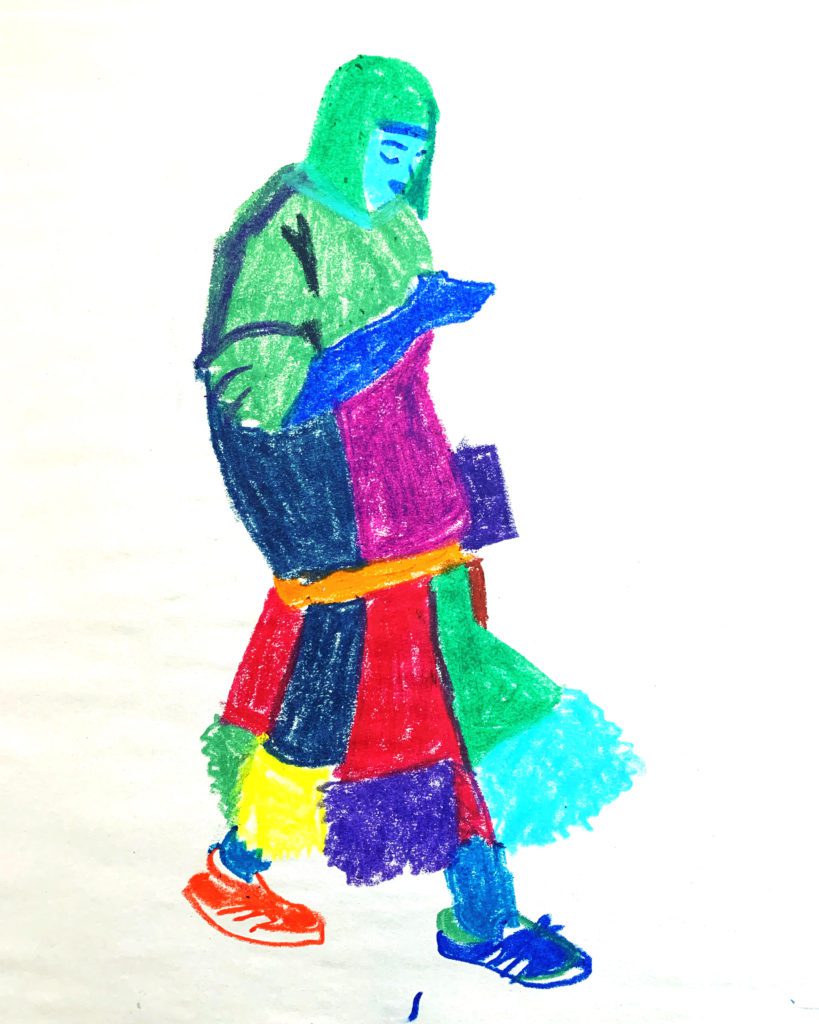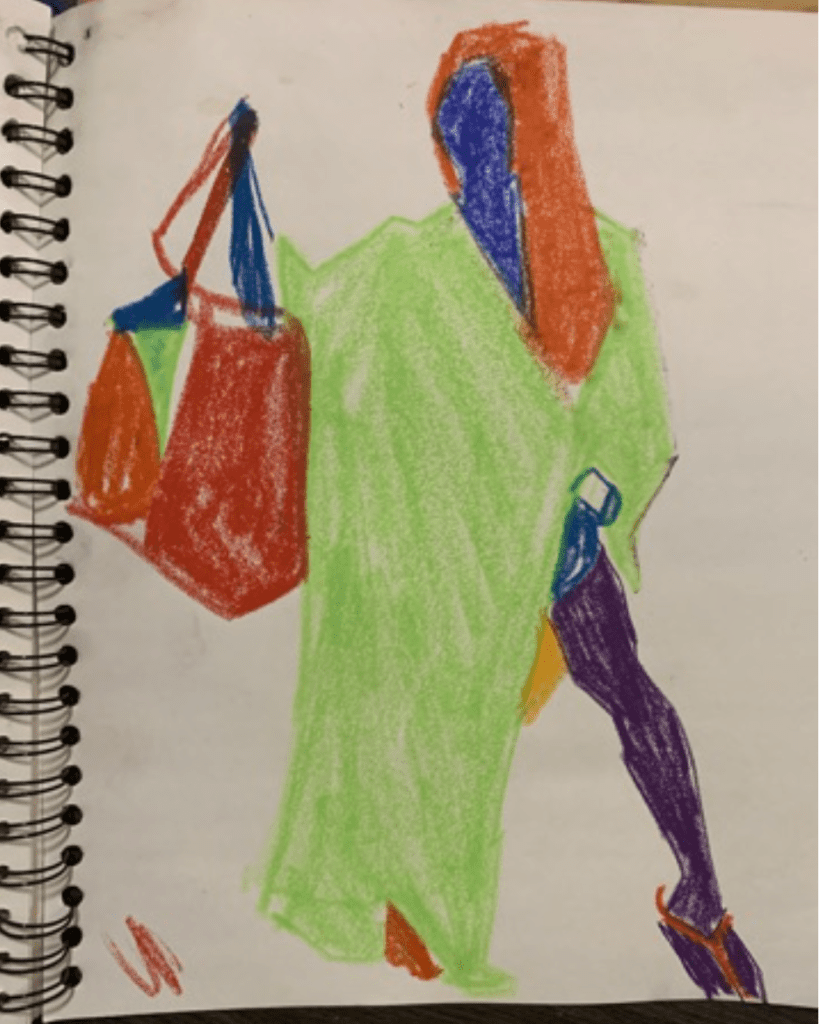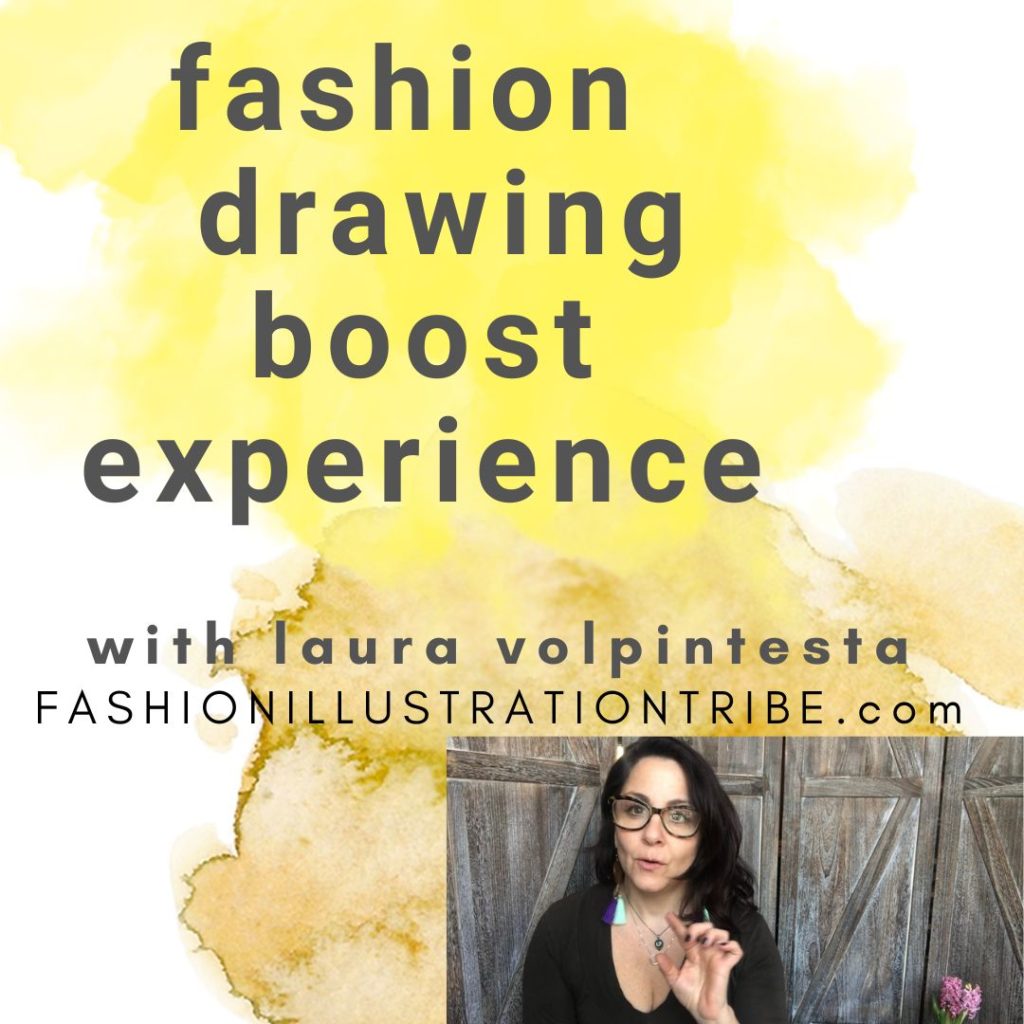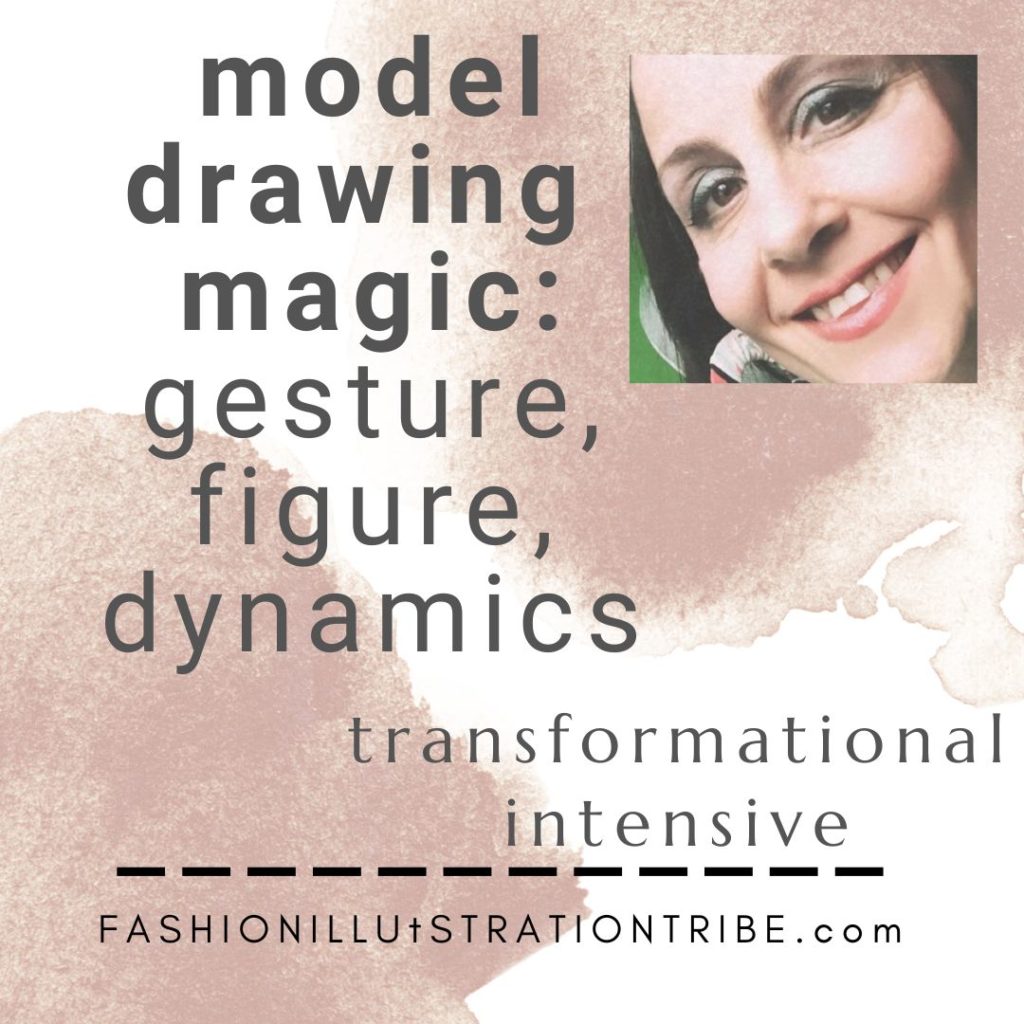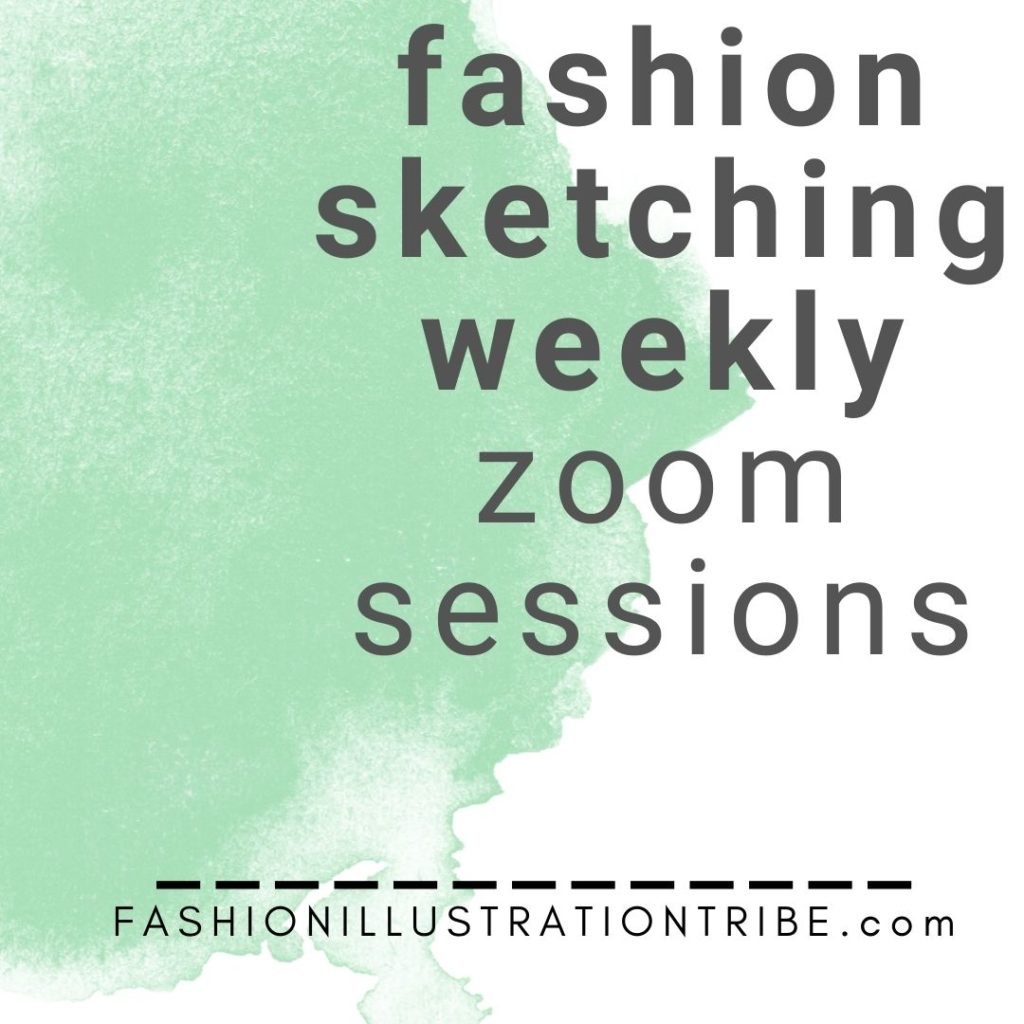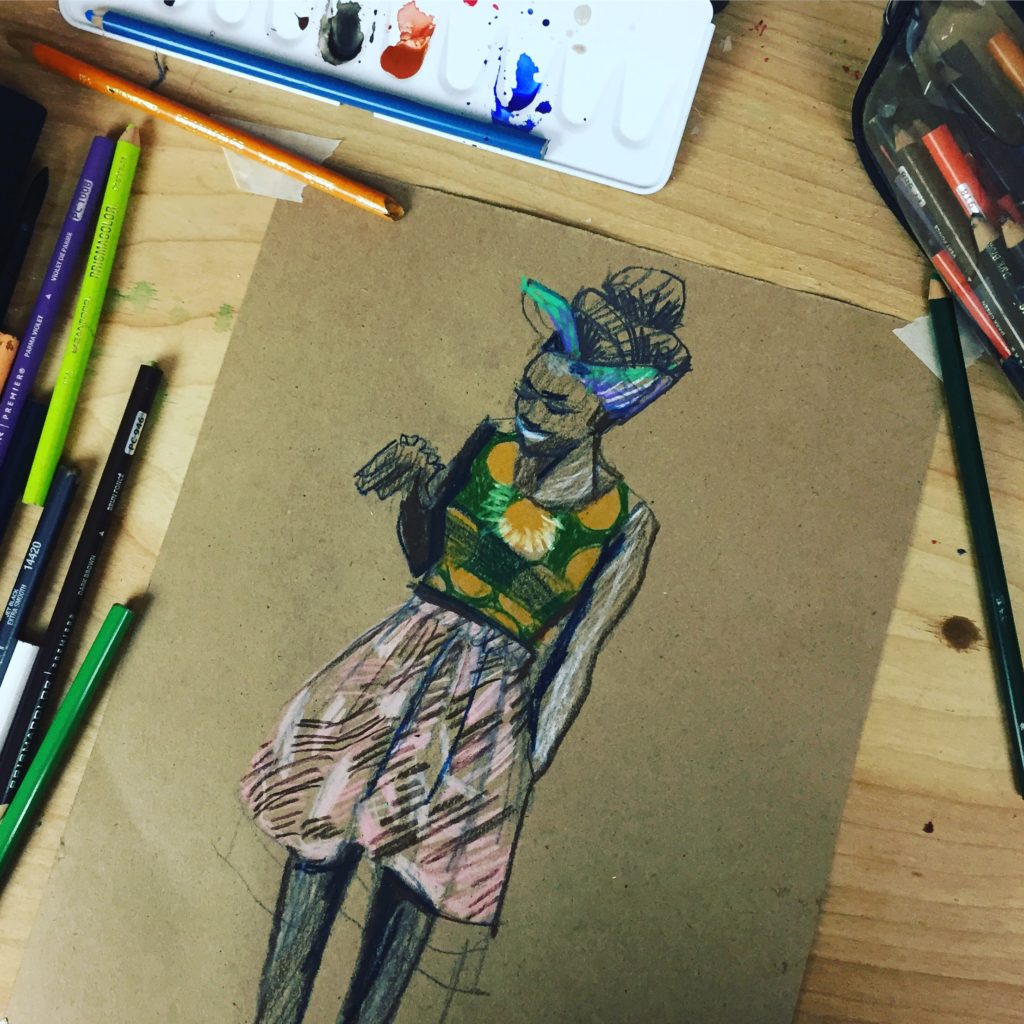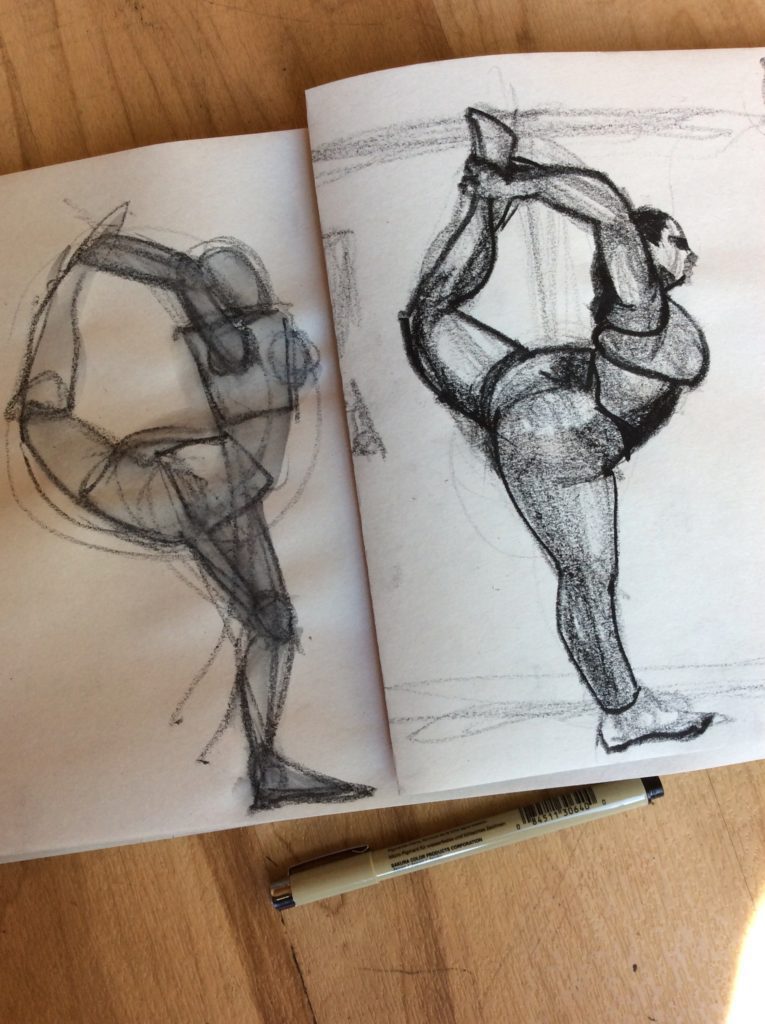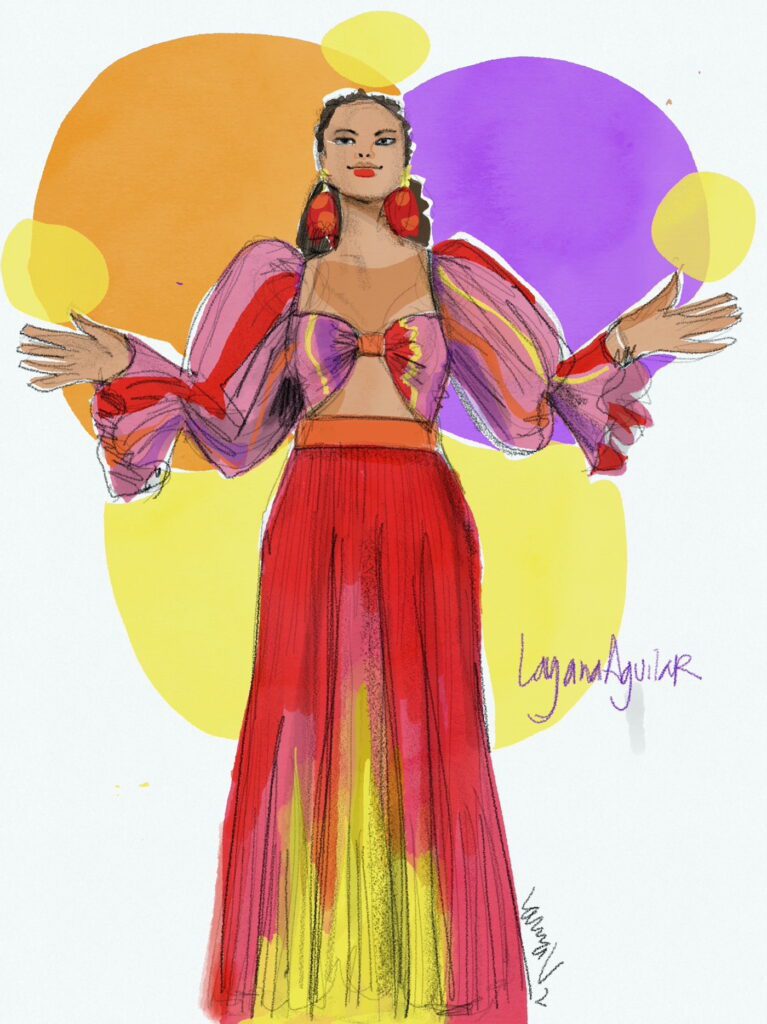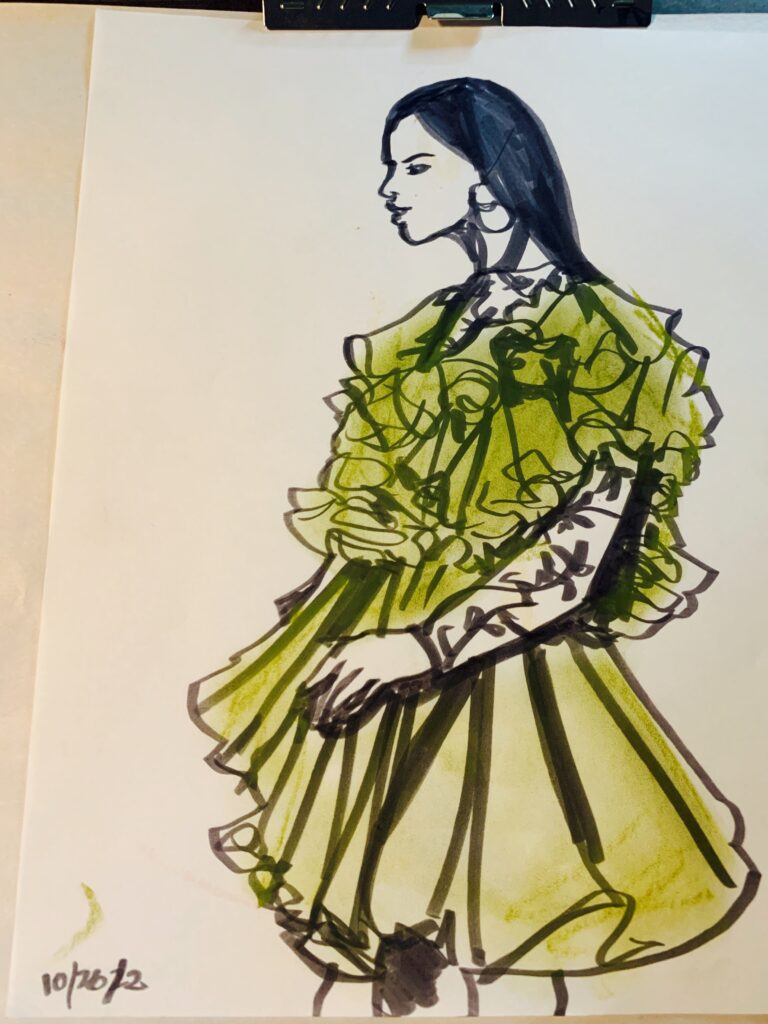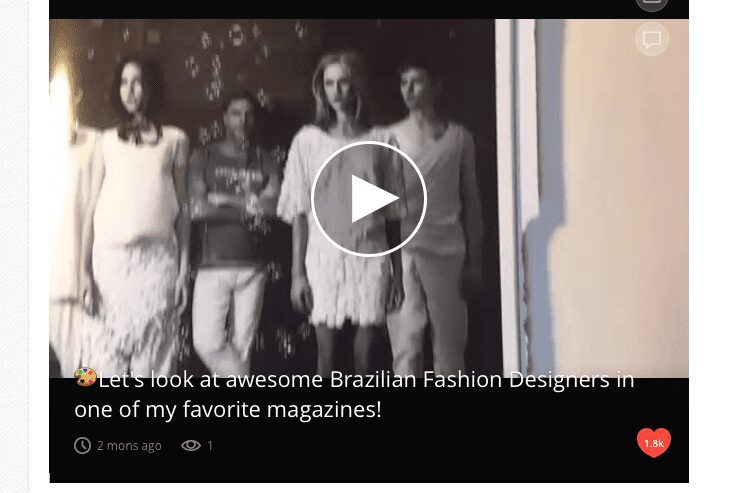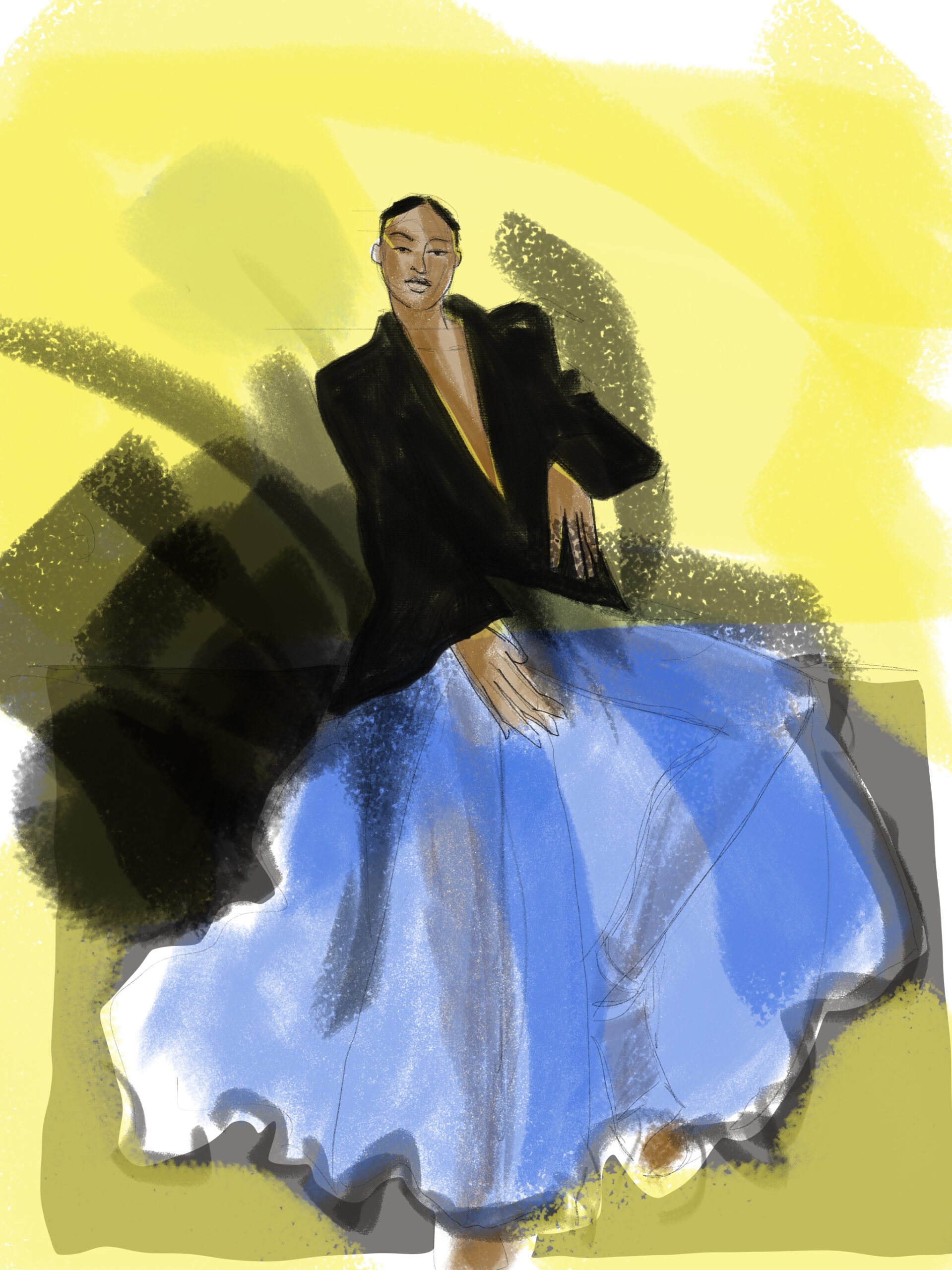Fantastic Color Blocking Exercise for Fashion Illustration
Color blockYes, you can read this article, but it’s NOTHING without action! I encourage you RIGHT NOW to grab colored pencils (if your paper is smallish like up to letter size) or oil pastel / Caran D’ache Neocolor crayon if your paper is larger.
THIS IS THE EXERCISE TO END ALL EXERCISES and if you are interested in drawing realistically for fashion illustration DO NOT SKIP THIS ONE!!!!!!!!!
I know it sounds ridiculous to say that this exercise helps you to draw more realistically, but it is 1,000 percent true. It’s one of the fantastic exercises featured in my MODEL DRAWING MAGIC 15 week (and growing) fashion drawing odyssey that delivers one innovative, myth-busting, paradigm-shifting figure drawing exercise every week plus model pose file videos to sketch from. *****MDM is a pre-recorded program, but Summer 2023 edition will feature 8 livestream drawing sessions in AUGUST -SEPT to boost your experience!****

Color Blocking Fashion Drawing Principles
At it’s most simple description, in color blocking we draw what we see in front of us one shape at a time. Here are the most outstanding aspects of the exercise:
- use NON REPRESENTATIVE COLOR! What do I mean? If you match brown to hair, skin to skin, shoe color to shoe color, etc, etc, then you’ll have a completely different experience.nce you start drawing what you see without matching the colors, your brain changes its orientation from drawing symbols like “hair” “face” , “shoe”, “hand” and starts to zoom much more specifically into the SHAPE of the (PURPLE?) face, the (ORANGE?) hair, etc.
- LINE “DISAPPEARS”- Well, not really. There are no LINES, but every shape has an edge. The line and the shape are fused into one.
- USE OPAQUE FLAT COLOR for each shape. This helps you truly see and feel the impact and character of every shape, and to fuse the shape to its edge (mentioned above)
- PURE SILHOUETTE For many of you, this will be the first time you create a drawing that doesn’t hold the white of the paper within it, which is a huge step! The entire drawing is full of tone, which is a great warmup also for how we work with gouache. You’ll be noticing the micro-silhouttes (of a foot, a bag, a cuff, bangs, collar) as well as fine-tuned in to the MACRO- overall silhouette of the fashion garment , pose, figure, and look.
- PROPORTION once you begin the drawing, carefully lay down each shape in truth compared to the first shape. This will keep your proportion accurate. DON’T try to adjust the size of things just to fit the pose onto the page. Let the size of the first shape you drew keep you consistent with the relative size of every shape you capture in your drawing.
- PACE YOURSELF I suggest setting a timer for 10 or 15 minutes and letting the drawing be done when the timer goes off regardless of how “far you’ve gotten”. There is magic in this because it slows you down and brings you totally into presence with the drawing experience. it’s very meditative and actually VERY CALMING in a beautiful way you’ll only know as you experience it. There is no racing to the finish line!
- EDGES use every thing you know about contour drawing to capture the character of the edge of each shape as you go.
- ORDER there is no rule where you start, finish or proceed.I often start with the hair shape, but sometimes I work my way down the page from the top left to right and other times I go down the page just on the left side before ever tackling the right side. Follow your intuition.
- CONSTRUCTION use your knowledge about fashion or costume garment construction to recognize where you see seamlines or layers, and make sure to switch colors wherever you see those breaks in shape. The part in the hair, etc, also means it’s time to change colors!
- LIGHT AND SHADOW sometimes I’m drawing an image that has simpler shapes and find I’m finished quickly (other times I don’t come close to finishing capturing all the shapes) but if I “finish early”, I will sometimes take colors into each shape at the end and lay down the shapes of the shadows I see. Learning and practicing to see shadows as SHAPES is a VERY VERY powerful exercise for effective fashion illustration drawings!
Did you practice the color blocking exercise yet?
The main reason I’m so proud of and in love with this color blocking model drawing exercise is that so many of my fashion illustration students have MAJOR BREAKTHROUGHS with this exercise! One of the breakthroughs comes through the experiential process of drawing this way. Using the non-representative color invites an attitude of openness that makes us more “accurate” and “scientific” in our approach rather than perfectionist. It keeps us open to fresh perspectives.
The other most powerful aspect of drawing this way is that students feel like they can really feel and see the result of their drawings for the very first time! They can SEE where they are accurate and where they are not. Because they aren’t making fancy little lines and flourishes, they are fully focused on the shape, proportion, and balance of what they are capturing. Because it’s opaque, bright color, nothing is hiding anywhere. Everything is very bold and visible and it gives them the most honest feedback they’ll ever get, without having to say a word.
and actually all of my programs , are about this level of openness and discovery, about a playfulness that actually makes us more capable of accuracy AND emotion in our work.
Fashion Sketch Group offers a live zoom environment for WEEKLY practice.
I hope you’ll join us for this round of Model Drawing Magic and feel these experiences in your physical and soulful nature.
Love
Laura

